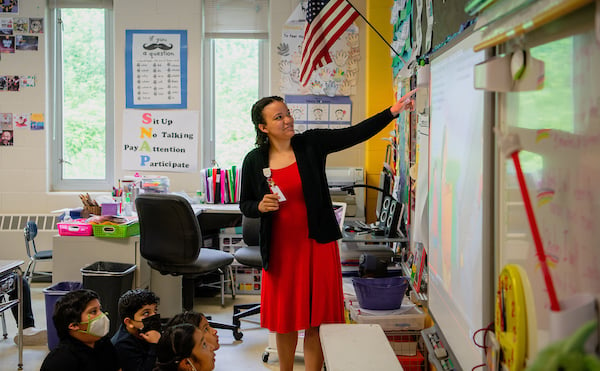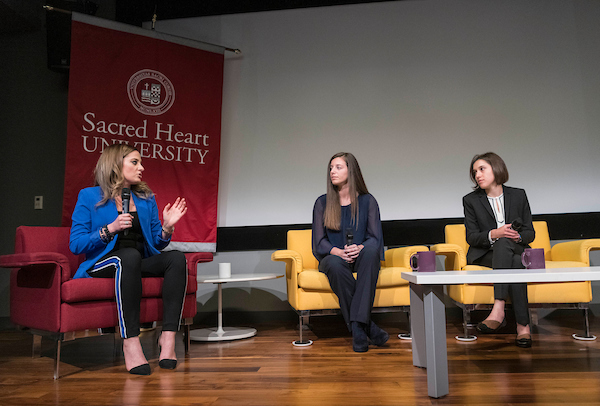According to Forbes, in 2019, over half of the population of the United States hated their jobs. And this is before the pandemic caused drastic changes in the U.S. labor market. Roughly 33 million Americans have quit their jobs since Spring 2021, which is why many economists are calling this time The Great Resignation. Right now is a great time to explore changing your career trajectory and currently, your options are wide open.
How do you feel about going back to school for a short while? Are you interested in a graduate degree? Have you ever thought about becoming a teacher?
If so, the path may be easier than you think. Many people believe that the only way to get a teaching job is through a bachelor's degree in education. But that’s not true — you can become a teacher without a bachelor's degree in education.
Programs like the Master of Arts in Teaching (MAT) with Initial Teaching Certification at Sacred Heart University roll a master’s degree, teacher training, and initial teacher certification into one program — ideal for people who want to enter the field but have a bachelor’s degree in something other than education.
Pique your interest? Here’s how you can start your teaching career.
How to Become a Second-Career Teacher
1. Decide what subjects/grade levels you might want to teach.Your post-bachelor teacher education program will prepare you to lead a classroom and gain certification to teach at a specific grade level. Before starting a program, you should consider whether you’d prefer to teach elementary school (grades 1-6) secondary or high school (grades 7-12) or music (PK-12).
If a secondary school teaching certification is appealing to you, you’ll need to choose a content area in which you’ll specialize. This could be based on your undergraduate degree or current profession.
For example, someone with a business degree might be interested in teaching mathematics, while a person with a degree in Political Science could potentially apply their education and experience to teaching history, social studies or government.
2. Double-check your prerequisites.
Regardless of which certification area you choose, you’ll need to meet strict prerequisites to seek certification in any content area. But don’t worry — there’s a good chance you’ve already met many of them.
For example, you’ll need at least 39 undergraduate credit hours in English, Math, Science, Social Studies and either a foreign language or fine art for all certification areas. Basically, you need to have completed and passed your core undergraduate classes.
Your certification area will dictate any additional prerequisites you might need, like the extra history courses you’d need if you had a degree in Economics but wanted to teach Social Studies.
For areas in which there are teacher shortages, like high school math and science, you are allowed to take a Praxis II Subject Area assessment in lieu of having all of the prerequisite credits.
3. Complete a teacher training program.
There are a lot of graduate-level teacher training programs out there, but what makes one program better than another may not be immediately clear. Here are some things that indicate a high-quality program:
- The school and program are well established with a respected reputation
- Students are given strong career and academic support
- Faculty members have real-world experience
- The master’s degree and state certification are part of one complete program
- Students participate in engaging hands-on experiences and spend time in real classrooms
The Master of Arts in Teaching with Initial Teacher Certification degree offered through the Farrington College of Education & Human Development at SHU is research-validated, student-focused, and nationally accredited by the Council for the Accreditation of Educator Preparation (CAEP). This advanced degree offers every student an education of the highest standard, backed by expert faculty, and built on clinical experiences.
4. Pass the edTPA assessment.
This assessment will be taken close to the end of your program. The edTPA is designed to prove that you’ve mastered the basics of being in a classroom — you know your subject well and know how to effectively interact with your students and the administration.
5. Obtain your teaching credential.
Once you’ve completed the appropriate number of credit hours, a teacher preparation course and the necessary standardized tests, you can become a certified teacher in Connecticut. You can learn more about getting your teaching credential in Connecticut from the Connecticut Department of Education Bureau of Certification.
When you choose to go back to school for your MAT and teaching credential, you start the journey to making a huge difference in your community. Your credentials will follow you if you were to move, even to another state. We will always need teachers, so you will have job security for the foreseeable future.
Choose SHU's MAT Program For Tangible Change And Positive Results
It’s not abnormal to be unhappy in your career. If you are ready for a change and the teaching profession sounds like a fit for you, download our free guide. Why Choose Teaching — The Benefits of a Career in Education will help you discover some of the best parts of a teaching career, and provide more information about graduate-level teacher education programs at SHU.








